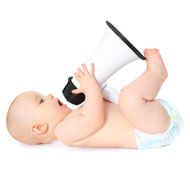Types & Procedures to Conduct Toddler Hearing Test
Hearing is an essential part of a child’s growing years in all aspects of its social, emotional and cognitive development. A mild hearing loss can affect a child’s capacity to understand language and speak.
The great news is that hearing problems can be solved if recognised early. It is important therefore that the infant is screened and evaluated regularly for such problems and that they are rectified at the earliest.
Types of Toddler Hearing Test
There are various toddler hearing tests available to check hearing condition for newborns, infants, toddlers, and for older children. Considering that hearing problem could be a common birth defect, there are many factors that could lead to hearing loss. It could be due to premature birth, high bilirubin content, medication, family history of hearing loss, complications at birth, frequent ear infections, staying for a long period in the neonatal intensive care unit, and exposure to loud noises or sounds even for a short duration.
Toddler Hearing Problems
You should look for hearing problems and signs of hearing loss when your toddler has poor, limited or no speech, is frequently inattentive, has difficulty in hearing, has trouble in responding to conversational speech, or gives inappropriate answers to questions.
The hearing tests for toddlers include the behavioral test, visual reinforcement audiometry (VRA), conditioned play audiometry (CPA), pure tone audiometry, tympanometry, and auditory brainstem response test.
In the behavioral test, the child’s behavioral response to sounds such as pure tones and calibrated speech is observed. The response may be in the form of eye movements, a head turn, or raising hands. Toddlers are capable of undergoing behavioral tests.
Conditioned play audiometry tests are performed for toddlers of 2-3 years of age.
In this test, the child is taught to perform a certain activity like putting a block in the box or placing a ring on the cone each time he/she hears a particular sound. Different frequencies are presented to the child at a sound level that normal children can hear.
Procedures to Conduct Toddler Hearing Test
The other toddler hearing tests that are performed are procedures like otoacoustic emissions (OAEs) or auditory brain stem response (ABR) when the child is unable to be conditioned. In ABR tiny earphones are placed in the ear canals of the toddler and small electrodes are placed on the forehead and behind the ears. Click type sounds are introduced and the electrodes are used to measure the hearing nerve’s response. The responses are averaged by the computer and results presented in wave form.
In pure tone audiometry tests the child wears a earphone and is asked to respond to different sounds at various volumes and pitches. The tests are performed by ASHA certified professionals who have the skill and knowledge to screen for hearing impairment in children.


